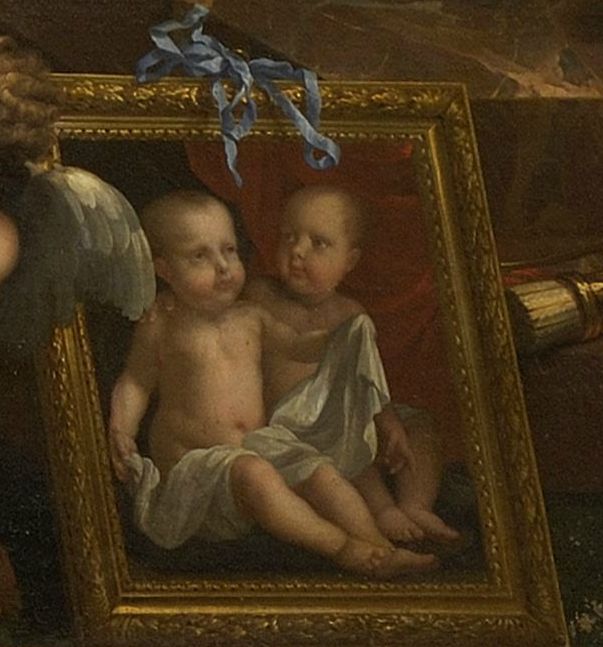Louis César de Bourbon, Comte de Vexin
Born on 20 June in 1672, at the château du Génitoy, Louis-César, named after no-one less than Julius Caesar, was the second born son of Louis XIV and Madame de Montespan.

Just like with his older brother, Louis-Auguste, the birth of Louis-César was kept as secret as possible in order to avoid Monsieur de Montespan claiming the child as his own. He was born as the court was in mourning for one of Louis’ legitimate children, the little Marie-Thérèse, who had died of tuberculosis aged only five, just a couple of months earlier. Louis-César would only outlive her five years.
The little boy was given into care of the widow Scarron, who already looked after his brother in a house bought especially for the purpose. Madame Scarron was much attached to Louis-Auguste, not so much to Louis-César and their 1673 born sister Louise-Françoise. Louis XIV showered his mistress with diamonds at the happy occasion of Louis-César’s birth.
All three of them were officially recognised as children of Louis XIV by letters patent on 19 December in 1673. The mother was however not named, due to her being married. With this legitimisation, all three of them were able to style themselves de Bourbon and also received some fancy titles. Louise-Françoise became Mademoiselle de Nantes, Louis-Auguste, the King’s favourite, became Duc du Maine, and Louis-César became Comte de Vexin, an ancient title dating back to the 10th century.
Little Vexin was born with a crooked spine, which caused him much pain and to limp. One of his shoulders was also higher than the other. This dismissed him even more than his older brother, who had a leg shorter than the other, from a military career.

Thus the King decided the child should make a career in the church instead and made him Abbot of Saint-Denis, the traditional burial-place of the Kings of France since the 7th century. Of course, the little boy was too young to take care of the Abbot business himself and someone else managed the whole thing until he would come of age…
Louis-César had to undergo various treatments to help his crooked spine, which did, of course, nothing to help it and caused him more pain than anything else. In contrary to her relationship towards the Duc du Maine, Madame de Montespan seems to have been a bit closer to little Vexin. At least, she and her sister, the Marquise de Thianges, watched over him when the boy felt weak… and that was pretty often. All of those treatments supposed to help him, made him weaker and weaker.
In 1678, Vexin’s condition worsened and it was thought he would die. He was once more treated by the doctors, which somehow managed to keep him alive… or he somehow managed to survive them. Either way, the little boy was bedridden for days again and again.
As his mother’s star began to sink, she took Louis-César to her residence at Clagny with her to take the clear air of the country and rest. It did little for his health.
Louis-César died in Paris on 10 January in 1683, just ten years old. Madame de Montespan was distraught. The little boy was buried at the Abbey of Saint-Germain-des-Prés, the burial-place of Merovingian Kings of Neustria.





